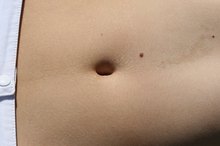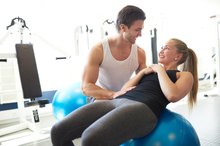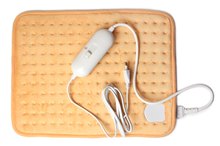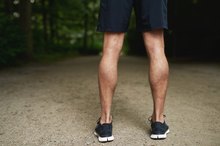How to Treat a Pulled Stomach Muscle
Straining an abdominal muscle can come from a variety of activities including exercising or coughing. The strained muscle will have a dull ache nearly all the time, which becomes more pronounced upon moving. Since the abdominal muscles are also the core muscles for balance as well as most movement, a stomach pull can be very painful. Activities as simple as laughing or rolling over can cause pain.
If you are experiencing serious medical symptoms, seek emergency treatment immediately.
Treating a Pulled Stomach Muscle
Sit down as soon as possible with your feet up, in a reclining position. As with all pulled muscles, it is important to begin treatment as soon as possible. If you feel a sudden pain or pull in your abdomen while exercising or doing heavy lifting, immediately stop the task.
How to Rehab a Suspensory Strain
Learn More
Place an ice pack on the affected area. If no ice pack is available, a bag of frozen peas works nicely to conform to the contours of the stomach. Apply the ice pack to the affected area for at least 20 minutes, but not more than 30 minutes.
Take ibuprofen to help relieve the pain, too. Follow the dosing directions on the label, or ask your health care provider for instructions as he may want to increase the dose to help relieve both pain and swelling.
Flank Pain From a Stretching Tear or Pulled Muscle
Learn More
Repeat the icing again in three hours and repeat four times a day for at least two days. Continue taking ibuprofen as needed or as directed by your physician. Some people find relief in heat, but it should never be used for an acute injury. If, after 48 hours it is still too painful to move much, heat can be helpful in loosening the muscles before any activity. Do not apply heat for longer than 20 minutes prior to an activity (such as taking a short walk), and be sure to apply ice after the activity.
Rest your abdominal area as much as possible, by following the cues your body gives you. It can take several weeks for a minor strain to heal completely and several months for a major strain to feel better. Give your body time to heal and try not to re-injure the area.
Tips
Resting in a recliner will help you put less strain on your stomach muscles. You can recline and then use the chair to help you sit upright, saving the strain on your abdomen.
Bending from the knees to pick up heavy objects will save both your back and your abdomen from undue strain and injury.
Warnings
If after 24 hours the pain gets worse or feels more like stabbing pain than an ache when you move, seek help from a doctor as your stomach strain may be a hernia.
If you feel a lump in your abdomen you'll need to consult a doctor, too, as that is also a sign of a hernia.
- Sit down as soon as possible with your feet up, in a reclining position.
- Follow the dosing directions on the label, or ask your health care provider for instructions as he may want to increase the dose to help relieve both pain and swelling.
Related Articles
Tips
- Resting in a recliner will help you put less strain on your stomach muscles. You can recline and then use the chair to help you sit upright, saving the strain on your abdomen.
- Bending from the knees to pick up heavy objects will save both your back and your abdomen from undue strain and injury.
Warnings
- If after 24 hours the pain gets worse or feels more like stabbing pain than an ache when you move, seek help from a doctor as your stomach strain may be a hernia.
- If you feel a lump in your abdomen you'll need to consult a doctor, too, as that is also a sign of a hernia.
Writer Bio
Erin Monahan is an author and editor with over 25 years experience. She has written on a variety of topics including celebrity interviews, health reporting and parenting. Her work has appeared in daily newspapers and national magazines, including "Wondertime," and on websites such as Kaboose.com. She was recently named one of the top writers in Pennsylvania. She holds a Bachelor of Arts from Simmons College.









